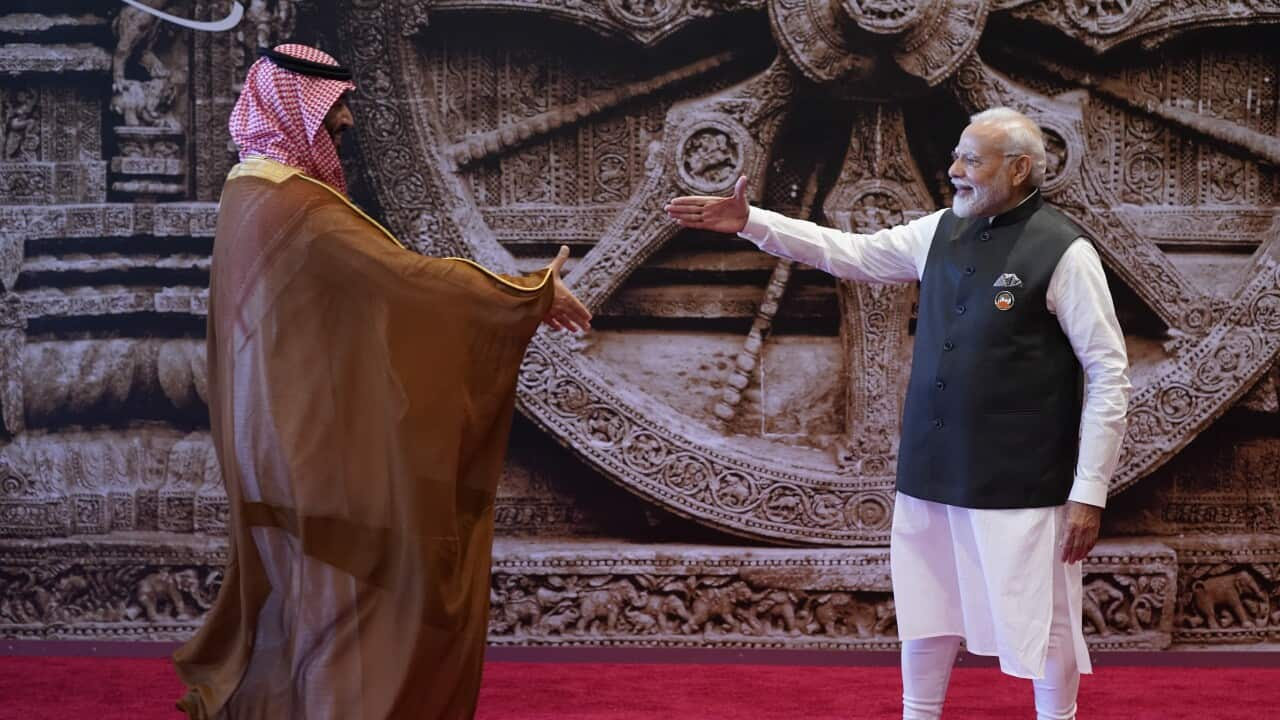‘When we say the word India, there are actually many Indias,’ Meredith Clencie, Principal of The Grange P-12 College, Hopper’s Crossing, that included Hindi as its primary language in the curriculum.
Ms Clencie introduced Hindi in her school of 950 students as she observed many Indian families were moving to the area. “I looked around for schools that were doing the Hindi language because I thought we would pick a main language of India," she told SBS Hindi.
“I looked around for schools that were doing the Hindi language because I thought we would pick a main language of India," she told SBS Hindi.

Students celebrating Indian festival Rakhi Source: Supplied by Danyal Syed
"And, there was only one other school in Victoria, that was Rangeview over the other side of town. So we visited them and had a look at what they were doing. And then we decided that the next year we would start teaching Hindi in prep at our primary school and that is what we have been doing.”
Next year the Hindi classes will be going to Year 5, and around 650-700 students of the school are learning Hindi at the moment. Hindi classes involve holistic learning that includes script and culture.
Hindi classes involve holistic learning that includes script and culture.

Students celebrating India's Independence Day Source: Supplied by Danyal Syed
"We made the decision that we would teach Hindi script and not just speak the language because I think if you are going to teach the language, you have to teach every aspect of the language.
“When we say the word India, there are actually many Indias. Regionally India is incredibly diverse. And having visited India myself, I know that Delhi is different from Goa, which is different from Kerala and Gujarat.
Hindi classes involve holistic learning that includes script and culture.
“So, I think we try and use some of the nuances around the different areas that our students are from within India to help to introduce some cultural aspects.” However, Ms Clencie points out that the school doesn’t focus on Bollywood and food; the two things many foreigners connect with Indian culture.
However, Ms Clencie points out that the school doesn’t focus on Bollywood and food; the two things many foreigners connect with Indian culture.

Source: Supplied by Danyal Syed
“One of the things that we don’t do is that we don’t focus on things like food and Bollywood because I think that really trivialises culture and language. So we try and look at things like arts, literature and poetry rather than just focus on food dancing,” Ms Clencie said.
One of the things that we don’t do is that we don’t focus on things like food and Bollywood because I think that really trivialises culture and language.
Three-quarters of school’s Hindi students are of non-Indian background. According to principal Meredith Clencie, they love learning Hindi, and it teaches them about a vast country like India, which is one of the most important trade partners of Australia. Ms Clencie agrees to the fact that Hindi has the potential to grow as an economic tool too.
Ms Clencie agrees to the fact that Hindi has the potential to grow as an economic tool too.

Source: Supplied by Danyal Syed
“For a long time, in my view, Australia has been focused on China, but India is a very massive country which could offer huge economic benefits to Australia. So I think even learning Hindi as a recognition of India as a country is really important for students starting from 5 years of age. And the Indian community India parents and their strong values around education have definitely been helpful as well,” she says.




